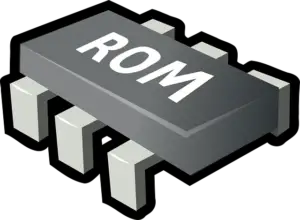We all are well aware of Read-Only Memory, abbreviated as ROM, which is actually a memory chip used to store data permanently and retains it even when the system is turned off. In this article, we will take a look at the two modified versions of ROM – EPROM and EEPROM.
ROM is a type of non-volatile memory and the data once written on it cannot be erased, but the advanced versions of ROM – EPROM and EEPROM resolved this issue and allowed erasability and reprogramming of data.

EPROM stands for Erasable Programmable Read-Only Memory. As its name suggests, the data written on an EPROM can be erased and reprogrammed. A strong light source of ultraviolet radiation, such as a Mercury-vapour lamp is used and the light emitted by it is concentrated on the EPROM chip to erase the data stored in it. Later on, after the data has been erased, it can be reprogrammed to store specific data.
While EEPROM stands for Electrically Erasable Programmable Read-Only Memory. Its working is similar to the working of EPROM, the basic differences exist only in its programmability and erasability methods as well as efficiency to perform. EEPROM uses electric signals to erase and reprogram data on a byte basis.
Difference between EPROM and EEPROM
| EPROM | EEPROM |
| It uses ultraviolet light to erase and program data. | It uses electrical signals to erase and program data. |
| It has a transparent quartz crystal at the top of the chip. | It is encapsulated inside a plastic case. |
| It can be taken out of the computer to reprogram data on it. | The data is reprogrammed by keeping the chip inside the computer circuit itself. |
| It is a modern version of ROM and PROM. | It is a modern version of EPROM. |
| The relative size of every cell in EPROM is 1. | The relative size of each cell in EEPROM is 3. |
| It uses a transistor with a voltage supply of 12.5 Volts. | It uses a transistor with a voltage supply of 5 Volts. |
| The data is erased when electrons are far away from the cell. | The data is erased when electrons are trapped in the cell. |
| EPROM takes about 15-20 minutes to erase data from the chip. | EEPROM took 5-7 milliseconds to erase data from the chip. |
EPROM and EEPROM were developed to overcome the problems faced while using ROM and PROM. Using EPROM and EEPROM to erase and reprogram data ensures the reusability of the chips at a much faster pace and at low cost, which gives an edge over the limited advantages of ROM and PROM. While EPROM came out as a modified version of ROM and PROM, EEPROM is even a more advanced version of EPROM.
The post Difference between EPROM and EEPROM appeared first on The Crazy Programmer.
from The Crazy Programmer https://ift.tt/3eTPmZy
Comments
Post a Comment